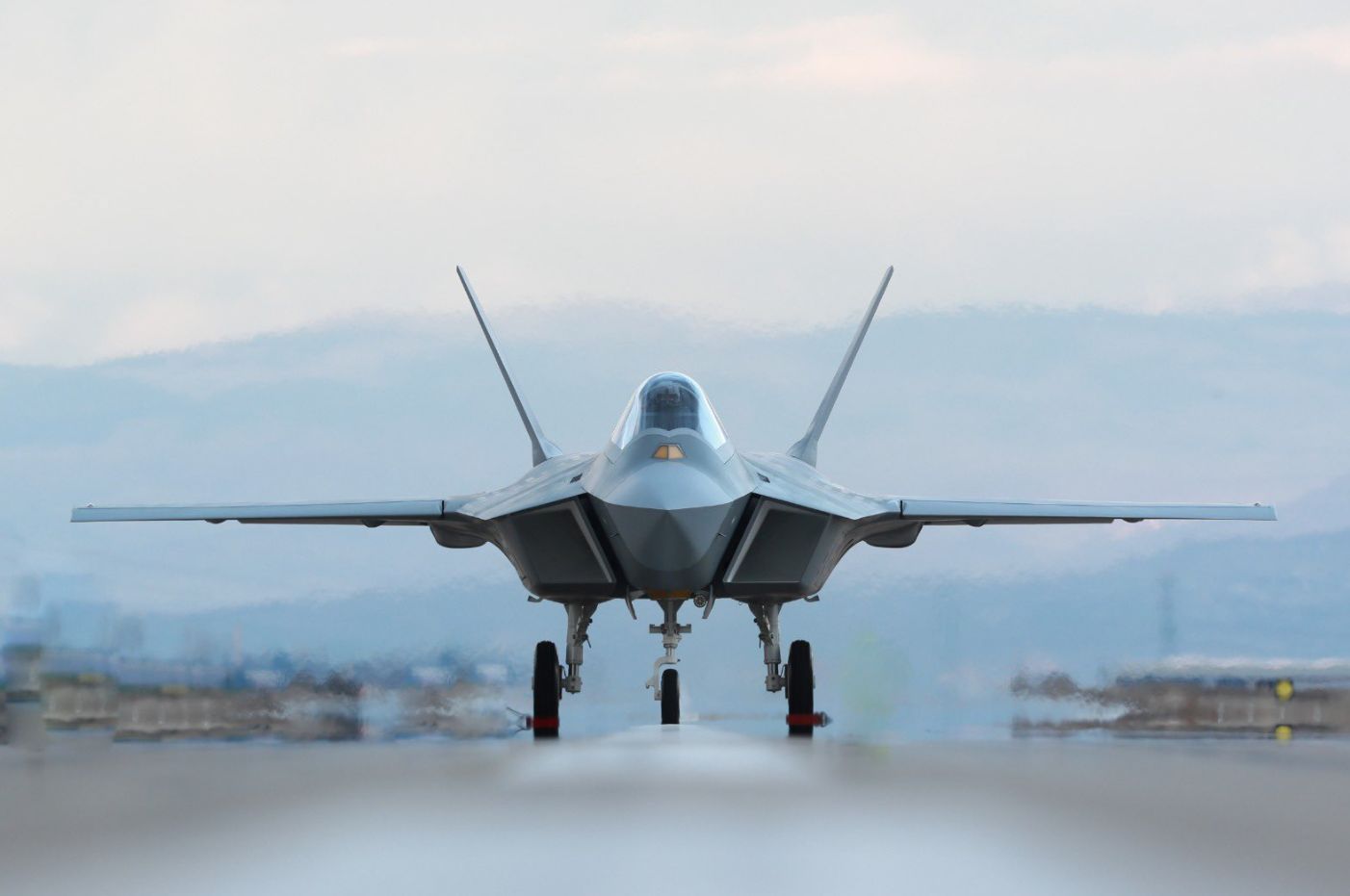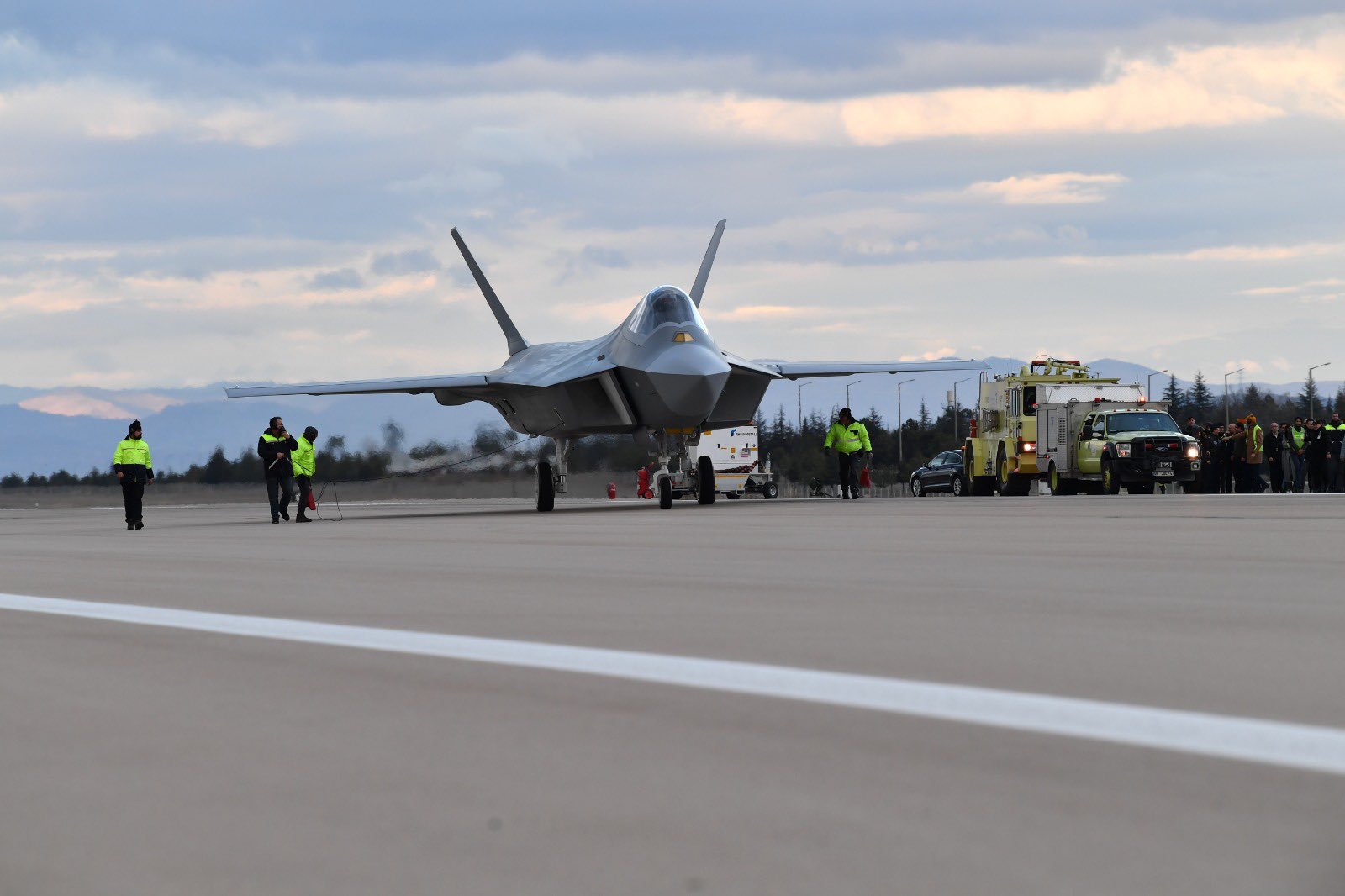The first prototype of Turkey’s TF-X next-generation fighter jet successfully completed a series of taxi tests, marking what can be seen as a historic event for the country’s aviation industry.
The TF-X prototype can be seen on a runway in a set of photos released by Turkey’s state-run Defense Industries Agency. It is believed that the pictures were taken at Turkish Aerospace Industries’ facilities in Ankara.
The development was first reported by a local defense news website SavunmaSanayiST.
Ismail Demir, the Turkish Defense Industry Agency chief, tweeted, “In memory of our martyrs! We said we would take our National Combat Aircraft out of the hangar on March 18. Our plane is on the runway today!”
“Under the leadership of our President Recep Tayyip Erdoğan, God willing will witness it soaring in our sky homeland,” Demir added.
The development of the TF-X started in 2010, although there were some setbacks and delays along the way. However, the development process rapidly picked up steam in 2019 when Turkey was excluded from the F-35 program.
The Turkish Aerospace Industries (TUSAS)-developed TF-X is equipped with fifth-generation warplane technology and characteristics. The country is aiming to have the first aircraft in service by 2030.
Turkey is now one of the few nations with the infrastructure and technologies to create a fifth-generation combat aircraft, the Daily Sabah said.
These technologies include internal weapons slots, high maneuverability, increased situational awareness, and sensor fusion, all of which are necessary for a new generation of aircraft.
Turkey’s fifth-generation fighter jet will boost combat power with precise and accurate firing from internal weapon slots at high/supersonic speed thanks to its high-performance radar, electronic warfare, electro-optics, communication, navigation, and identification capabilities.
Additionally, the aircraft is capable of multiple data fusion, artificial intelligence, and automatic target recognition and detection.

First Complete View Of Turkey’s TF-X
The latest images of the prototype once more reveal what seems to be a novel sensor arrangement located at the front of the jet. This sensor layout was initially spotted in public photographs earlier this year.
This appears to consist of a multi-purpose electro-optical targeting system, or EOTS, and an infrared search and track (IRST) sensor system underneath the forward fuselage.
The IRST can be seen mounted in a fixed, low-observable, prismatic box on top of the nose, directly in front of the cockpit. The TF-X prototype is now donning a two-tone grey color scheme.
The images depict exhaust nozzles similar to those found on different General Electric F110 models.
The SavunmaSanayiST also noted that the aircraft moved independently during the latest test, indicating that the General Electric F110 engines were successfully integrated.

The most recent plan by TUSAS is to propel the TF-X with F110 turbofans, some of which are also produced in Turkey by TUSAS Engine Industries (TEI) under license. But, the country is eventually seeking to switch to a domestically produced engine.
Reports suggested that F110s were recently delivered to power the TF-X. In the past, a possible engine collaboration with Rolls-Royce has also been discussed.
However, the potential agreement collapsed due to technology transfer and intellectual property rights complications.
Before Russia’s full-scale invasion of Ukraine, the idea of adopting a Russian engine type had also been floated, but it now appears unworkable from a practical and political standpoint.
That being said, there is still a lack of detailed information regarding the jet’s performance and capabilities, especially how low-observable (stealthy) it is.
The aircraft looks similar to the F-22 Raptor stealth fighter. From what we can see, it resembles the Raptor’s fundamental design.
Bir hayalim var…#MMU pic.twitter.com/KpvZQtHvDa
— Cem Doğut (@DogutCem) March 17, 2023
It is yet unclear whether the program will be able to meet the aggressive timeline that has been set for it. Meanwhile, Turkey’s interest in purchasing additional F-16s underscores the necessity for new fighters.
The Biden administration has urged Congress to approve a new F-16 Viper/Fighting Falcon fighter jets sale to Turkey. However, some members of Congress continue to oppose this deal.
On the other hand, the Turkish government has indicated they may look for other foreign-made fighters to help reinforce their troops soon.
Nevertheless, Turkey’s fifth-generation fighter aircraft is developed to complement the F-16 Fighting Falcons and replace the Turkish Air Force’s outdated McDonnell Douglas F-4 Phantom II aircraft.
- Contact the author at ashishmichel(at)gmail.com
- Follow EurAsian Times on Google News




